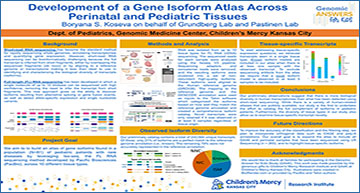Short-read RNA sequencing has become the standard method for rapidly sequencing whole genomes, annotating transcriptomes and quantifying gene expression. However, short-read RNA sequencing can be bioinformatically challenging because the full transcript is inferred from short fragments, either by overlapping the sequenced fragments (de novo) or by aligning to a reference genome or transcriptome making it less than ideal to use in identifying and characterizing the biological diversity of transcripts (isoforms).
Full-length (FL) RNA sequencing has been developed in which a single molecule of up to 10 kilobase can be sequenced with high confidence, removing the need to infer the transcript from short fragments. This new approach gives us the ability to discover isoforms resulting from alternative splicing or gene fusion events, as well as detect allele-specific expression and single nucleotide variants.





